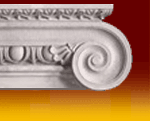Standards and Benchmarks Covered in this Lesson
II,3,1:
Select and use appropriate tools; make accurate measurements using both metric and common units, and measure angles in degrees
and radians.
II,3,5:
Use proportional reasoning and indirect measurements including applications of trigonometric ratios, to measure inaccessible
distances and to determine derived measures such as density.
Introduction
Anticipatory
Set: Warm up cartoon and Pythagorean Theorem review.
Objectives: After students measured the lengths of triangles and we briefly discussed the Pythagorean Theorem yesterday
and going over the warm-up today, students will be able to complete the investigation they began yesterday.
Investigation
Students
will finish up investigation 1 of lesson 2 today. I will guide them to a deeper
understanding of the content by giving multiple representations of the content and by asking carefully designed questions.
Conclusion
v
Checkpoint Pg 27
Ø
What relates the sides
of a right triangle?
Ø
How can that relationship
help us calculate the lengths unknown sides?
Ø
What relationships help
us find the side and angle measurements in any right triangle?
ØIf you calculate a side given a length and an angle?

